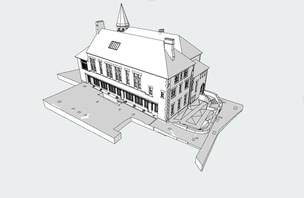A CHARGE could be applied to every new house in Barnsley to help pay for public transport improvements in future, in a move which could generate more than £20m over the next 15 years.
Charges to cover the cost of providing extra school places may also increase, with a new system to replace the current charging system which is now said to be outdated and underestimating the real cost of providing the new classroom places needed to cope with expanding communities.
Barnsley Council has recently approved its local plan, which clears the way for around 21,000 new homes to be built in the borough by 2033 and is now working on a fresh set of planning guidelines to govern the charges developers will be expected to make to cover the impact of their developments.
Consultations will take place before a decision is made in the summer on whether the council adopts them, but draft proposals would see new charges on new homes to pay for improvements to public transport, with a fee of as much as £1,500 for every bedroom in some areas. The proposal is that areas already well served by public transport would pay a fee of £500 for each bedroom, with those in areas with a poorer service being charged £1,500 to reflect the investment needed in those areas.
By the end of the life of the local plan, those charges could contribute more than £20m, enough money to draw in ‘match funding’ from other sources, allowing for significant developments.
Each school place needed to cope with the demand created by new housing costs around £16,000 and developers would have to meet that cost in future - higher than their current contributions which are calculated using an outdated system which does not reflect the full expense. There would also be a continued expectation on developers to provide ‘affordable homes’ as part of all but the smallest developments and either provide green spaces or pay the equivalent cost.
Developers can negotiate to some extent on the charges they have to pay, which are calculated under a system called Section 106, if the regular cost would make a development unviable.
The research will establish whether the proposals would have a negative effect in bringing developments forwards.
Some councils use an alternative form of charges on new homes, called the Community Infrastructure Levy, but Barnsley Council wants to stick with Section 106 in the belief it will be more effective in meeting the demands created by forthcoming developments. The council’s head of planning, Joe Jenkinson, said the way charges worked in practice would be reviewed in the future: “There is a requirement to review the local plan every five years. We will monitor closely the potential impact of these new changes.
“We are trying to get ahead of the curve by commissioning independent work ahead of the consultation,” he said.
The system of making charges based on bedroom numbers was already used for calculating the sums due to take account of needs for green space around new developments, he added.
Some local authorities which used the CIL system found most of the money raised was being used to support the education service, leaving little for other work to improve communities. Details of the proposed changes are detailed in a set of Special Planning Documents, currently at a draft stage which, if adopted, would mean higher charges overall. However, the aim would be to create a system which allowed the council to levy reasonable charges, while leaving building projects as viable business propositions.



























